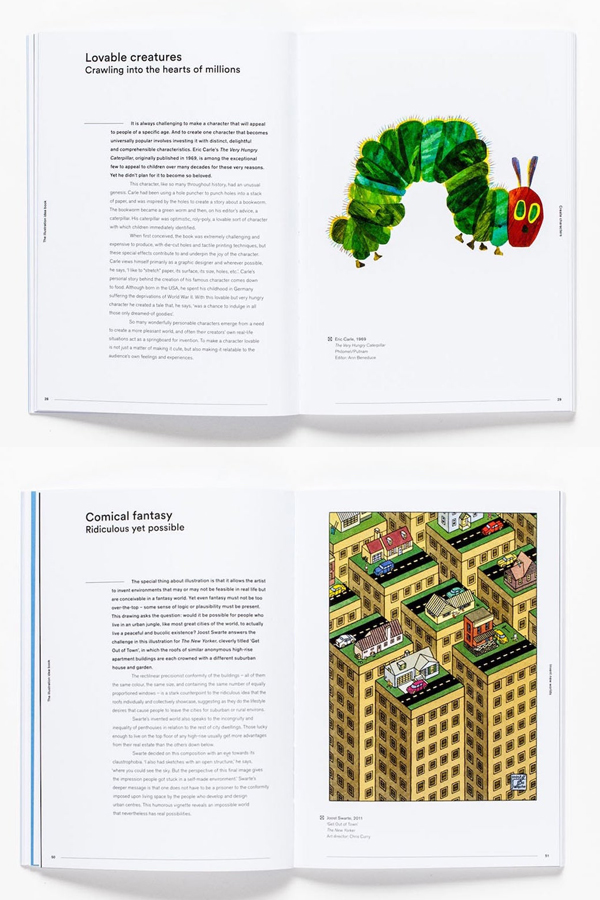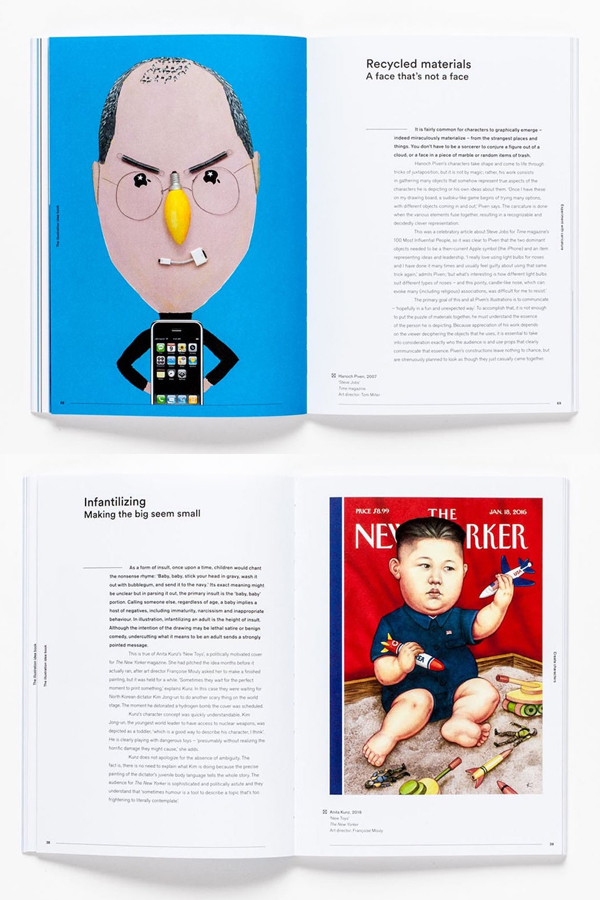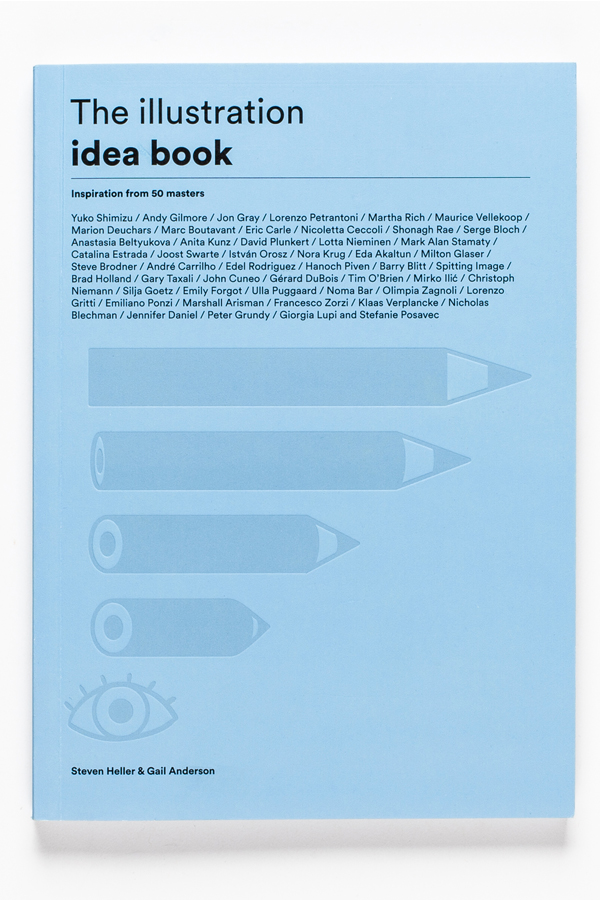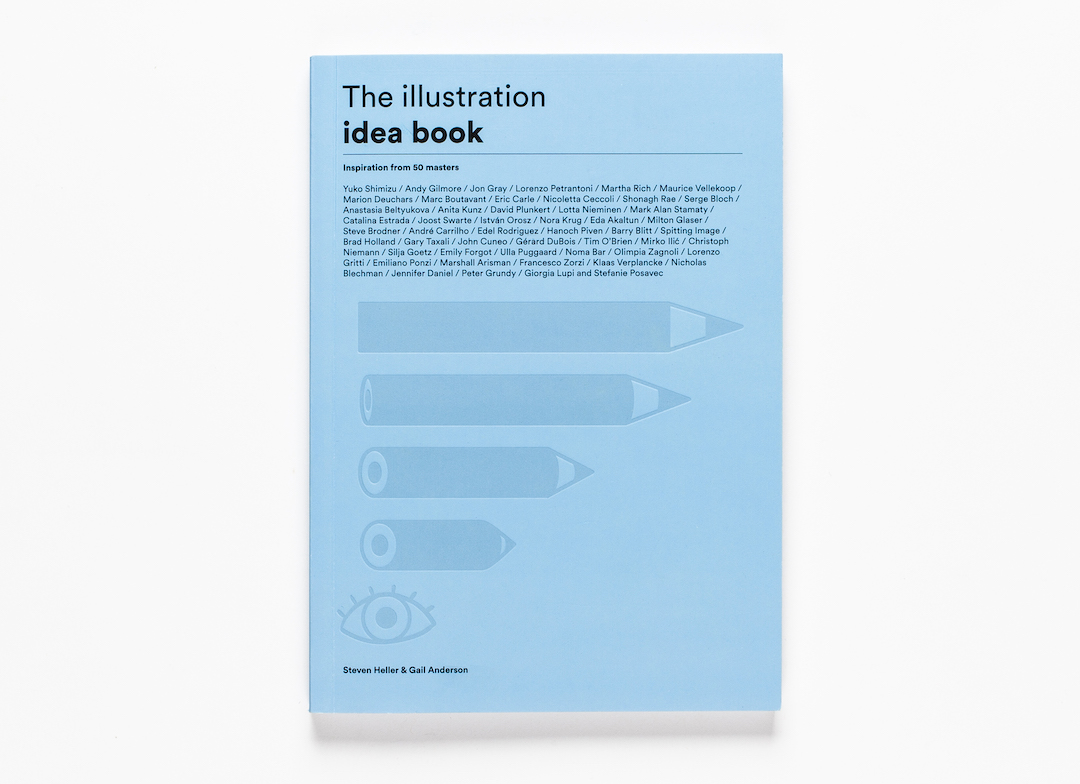
All images courtesy of Laurence King Publishing.
This post contains some affiliate links. If you make a purchase, Brown Paper Bag may earn an affiliate commission. Learn more here.
As an illustrator, how do you come up with ideas? It’s easier said than done. Really, when we ask that question, we’re talking about how we think; how our minds can make connections and visually express intangible concepts. Like all things, coming up with good ideas takes a lot of practice—of not just executing them, but cultivating them from a tiny seed into a full-grown bush.
The Illustration Idea Book will help you in your quest to come up with concepts and communicate in clever and concise forms. Written by the imitable Steven Heller and Gail Anderson, the publication features inspiration from 50 illustration masters. Yuko Shimizu, Matha Rich, Marc Boutavant, David Plunkert, Edel Rodriguez, Jennifer Daniel, and Lotta Nieminen are some of the names sharing their work.
Steven and Gail have divided the many works into seven categories of how ideas are expressed, from creating characters to visualizing data to using symbols and metaphors. As you look through each spread, you’re introduced to illustration ideas and the insight behind them—from both the authors and the illustrators.
I was honored to talk to Steven about the new illustration ideas book, which was released today. Scroll down to read the interview and learn how you can win a copy!
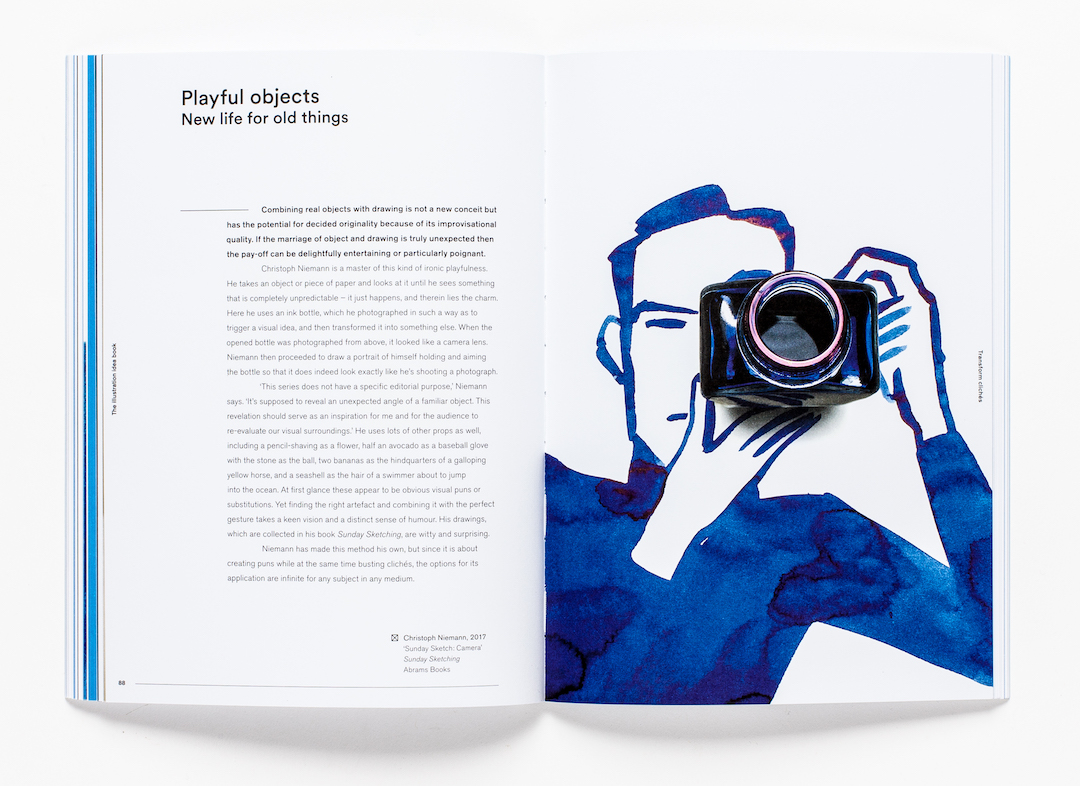
Where did the inspiration for this book come from?
Gail Anderson and I have been doing a series for LKP [Laurence King Publishing] the …… Idea Book. They proposed doing The Graphic Design Idea Book, I proposed the “Typography … “ and “Illustration .…”
What your criteria for selecting the illustrators in the book?
Criteria were simple. Good ideas! Gail and I have long experience as art directors of illustration. We both know how invaluable ideas are. If the style is beautiful that’s great, but ideas come in different forms. The ideas we selected ranged from the familiar to the surprises.
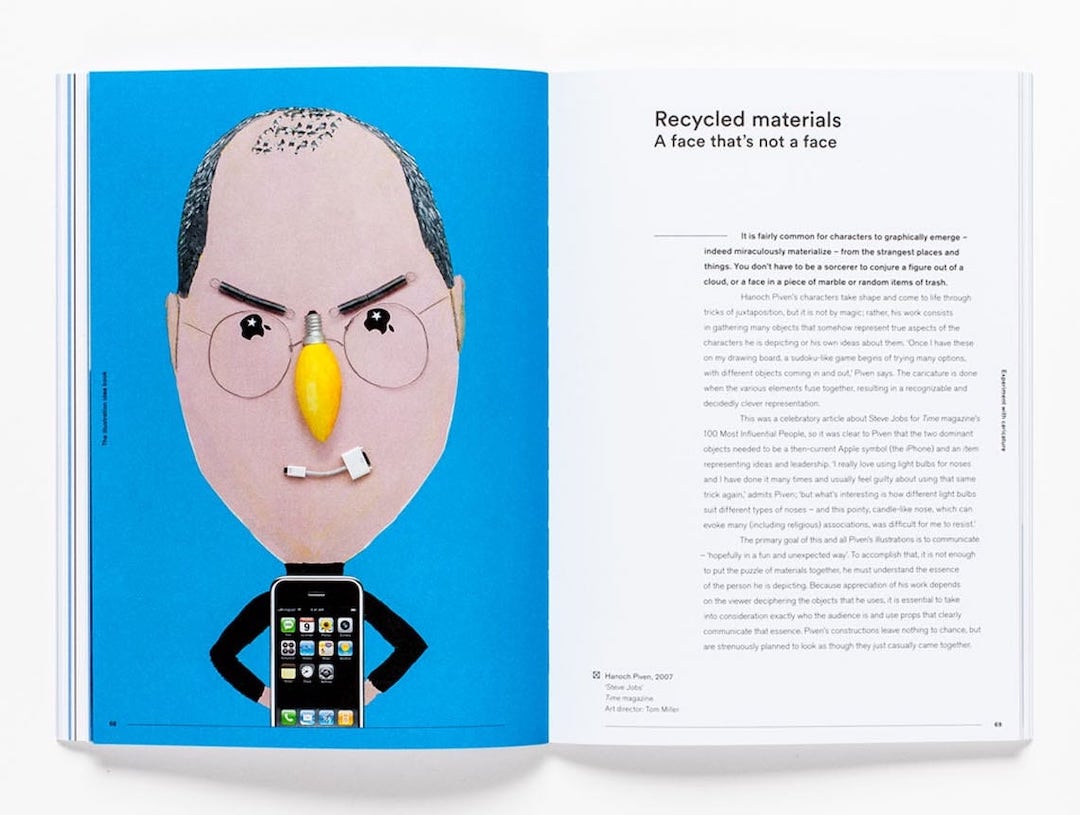
What do you think the group, as a whole, says about the field of illustration?
It is alive and well. And there are some very smart people out there. I’ve always known this, but I’m glad to validate the fact. Illustration is a viable art and a difficult craft.
You state in the introduction that there are “tried and true ways to conceive visual ideas”, calling them the “grammar of illustration”. How did you come to identify these approaches?
We let the work speak for itself. In other words, we might have pinpointed one idea, but after analyzing and figuring out a narrative for each or certain work, we found new or additional ideas at play. Some easily cross-over, so it was a matter of making an informed decision on where and why they fell into the bucket that they did.
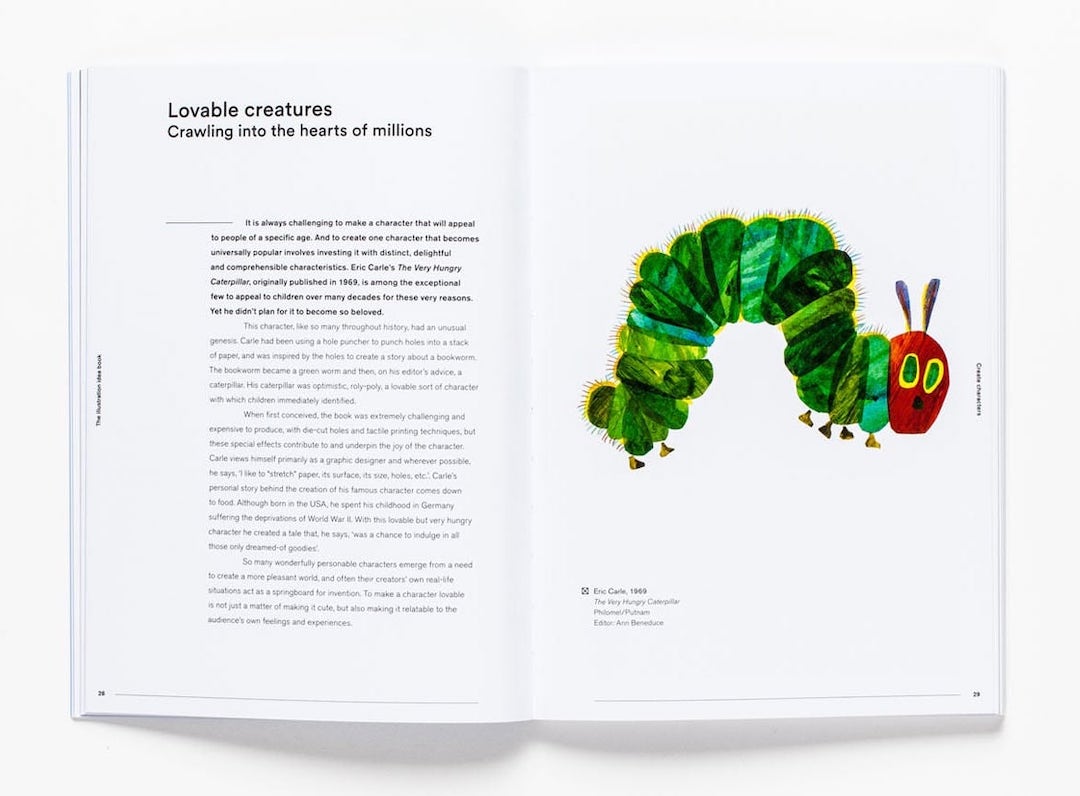
Are there are any others that didn’t make the book but you still think are important?
Probably. Doing a book like this, we did not start with 50 ideas and then found work to fill them. We had a couple of dozen ideas and found more. If we continued, we’d have found more, I think. There were, however, many left on the cutting room floor for one reason or another.
Most of the selected illustrations were created in the past decade. Why is that?
Most yes, but not all. Unlike graphic design and typography which builds on its legacy, we felt that illustration is much more tied to its timeframe. There is also just more “idea” work being done in the past, say, 40 years than in earlier times and we wanted the reader of the book to feel currency.
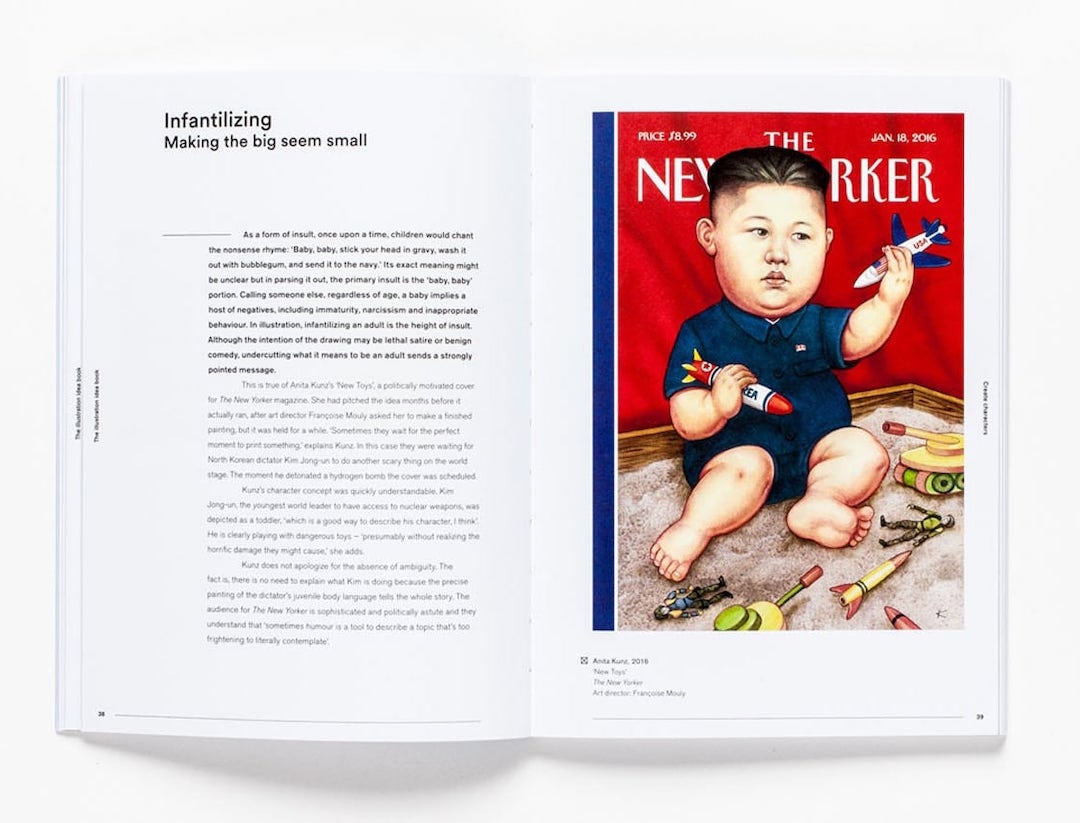
Of the ideas you list in the book, is there one (or two) that stands above the rest as the most important for an illustrator to master? Why is that?
Metaphor and transformation are two key ideas. But all the concepts, ideas and even tropes are important. The more you know, the more you can accomplish. But illustration is no longer about pure realism or idealism/romanticism as it was in the earlier 20th century. It is important to be able to translate the real into the symbolic and allow the audience to draw their own interpretations.
You and Gail are both educators. Where do you see this book fitting into the education of an illustrator?
What we love about the series is it is concise, compact and accessible. Students can learn and can absorb. In this era of too much and overdone, this suits us just fine.

